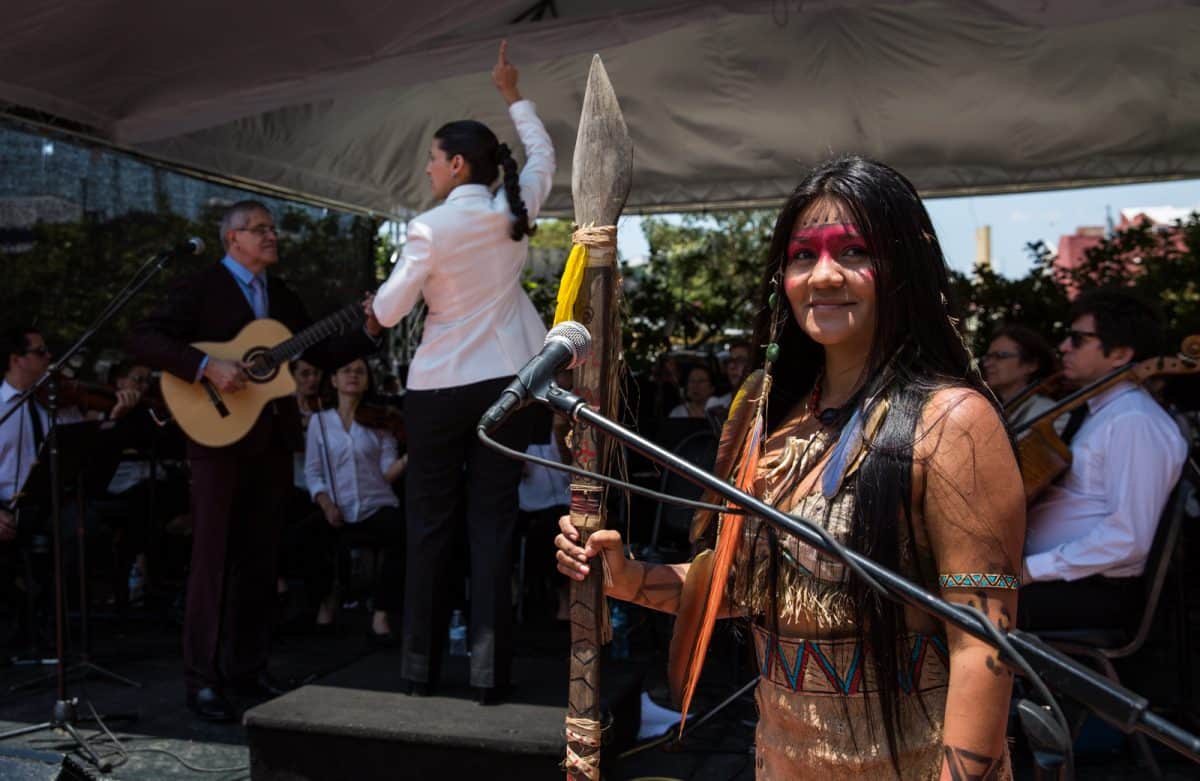In the foothills of the Tenorio volcano, near the Celeste riverbed, the Maleku indigenous people are demanding to receive the benefits they claim they are entitled to, generated by the thriving ecotourism circuit in northern Costa Rica.
These remote lands in the Guanacaste mountain range, some 200 km north of San José, are considered their own by virtue of an ancestral right by the original Maleku people, who claim that they have been usurped.
The river offers a visual spectacle for its apparent turquoise waters, a lagoon and a waterfall of more than 30 meters, which every day receive a thousand visitors from around the world.
But visitors to the Tenorio Volcano National Park do not reach the nearby community of Palenque Margarita, where new Maleku entrepreneurs offer ecotourism circuits based on their worldview.
Indigenous ceremony
“Our tour consists of a medicinal plant walk, archery, art classes, a traditional Maleku ceremony with indigenous dress and all in the Maleku language, and a typical Costa Rican lunch,” said indigenous entrepreneur Dagoberto Elizondo, 52.
The streets are sandy and signs in Spanish, English and Maleku Jaica encourage visitors to experience ecotourism from another perspective.
However, the buses that unload dozens of tourists at the gates of the national park do not reach the community, even though the national road connecting the two places is known as the “maleku route”.
Dagoberto’s tour costs $65 per person, but there are months when he receives no one, he admits under the palm roof of the traditional Maleku house where smoke accumulates with the aroma of cocoa beans roasting over a slow fire.
“In the indigenous territories of Costa Rica there is almost no work, how are you going to survive? Everything is money now,” he complains.
The Maleku are one of Costa Rica’s eight native peoples, who together represent 2.4% of the country’s 5.2 million inhabitants.
Optical Illusion
The Tenorio Volcano National Park, of some 18,000 hectares, is a natural attraction of lush forests with infinite shades of green, full of species of amphibians, reptiles, birds and mammals, with the Celeste River as the jewel in the crown.
The river is born from the confluence of the Quebrada Agria and Buena Vista rivers, which descend from the Tenorio volcano generating the optical illusion that makes its waters look turquoise.
“These rivers come (with) high alkalinity (…). We have calcium carbonate, copper and one of the main (minerals) is called aluminum silicate, which to the great dispersion of light creates an optical reaction for the human”, indicates to AFP the guide Felix Rojas.
Tourists take photos of the spectacular waterfall and the guides lead them along the trails while explaining, in different languages, the types of plants and animals they encounter along the way.
“This Tenorio Volcano National Park is an indigenous maleku area,” Rojas acknowledges.
Sacred places
The community’s remote location is its disadvantage and the Maleku complain that the government benefits from the national park’s income without taking them into account. These 3,000 hectares of land are a claim to the original Maleku territory.
Currently there are just three communities on 41.3% of that land, according to the human rights organization International Work Group for Indigenous Affairs (IWGIA).
“We lost it, now it belongs to the government. The Costa Rican governments are almost not interested in indigenous cultures,” says Dagoberto.
The community does not participate in or benefit economically from this ecotourism, despite the fact that Costa Rica has signed the UN Declaration on the Rights of Indigenous Peoples and ILO Convention 169 on land rights.
The river and the volcano are Maleku “sacred places”, said Jenny Lacayo, a 50-year-old indigenous entrepreneur, who also created a “cultural and tourist” business in her house in Palenque Margarita.
When a Maleku indigenous person is going to die, he chooses the place where he wants his soul to live, mainly the headwaters of the Celeste River or the Tenorio volcano, says Jenny.
The Maleku cosmovision demands that to enter the national park area the visitor must purify himself with cacao (sacred fruit for the indigenous people), but nobody explains that to the tourists who visit the river and the volcano.
“A non-indigenous person does not understand (…), does not know about this spirituality”, adds the entrepreneur, who highlights the added value of integrating the Maleku people into the ecotourism circuit.






